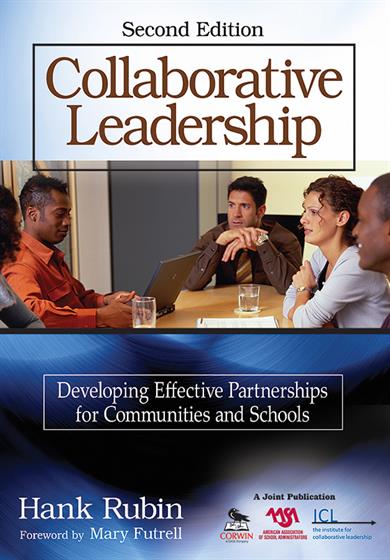Foreword to the Second Edition
Preface and Overview
Who Is This Book For?
Building Relationships for Children
A Note to Grantmakers
A Note on Writing a Book
A Quick Guide for the Reader
Dear Reader …
Acknowledgments
About the Author
1. An Invitation to Collaborative Leadership
Cutting Stone
Working Definitions
2. Collaborative Leadership: A Continuing Mandate
In Our DNA
The Importance of Powerlessness
The Position of Mission
The Monitor’s Dim Glow
3. Collaborative Leadership: If We Do It Right
Leveraging Leadership
Beyond Toolboxes
Collaboration and Competition
Collaboration and Creativity
Pushing String: Authenticity and Intentionality
So, Who Is a Collaborative Leader?
4. The Nature of Collaboration
Individual and Representational Participation
Types and Tones of Collaboration
Veracity and Tenacity
A Final Note
5. Most of Us Begin by Missing the Point: Why Education
Democracy’s Midwife
Supporting Education’s Civic Purpose
More Than Memory Banks
Content and Collaboration
Answering the Call for Public Collaborations
6. The 4th R
Looking at Teachers as Collaborative Leaders
Teaching Collaboration for Teaching’s Public Purpose
The Easy Case for Principals and Superintendents as Collaborative Leaders
A Final Thought
Schools and Colleges of Education
7. Constructing Models
The How
It’s All in Your Head!
Constellations-of-Relationships: Thinking Through Relationships
Collaboration’s Life Cycle
Overview
Phase 1: Why Collaborate?
Phase 2: Outcomes? Decision Makers?
Phase 3: Research: Knowledge, Policy, Politics
Phase 4: Stakeholders?
Phase 5: Frame and Recruit
Phase 6: Leaders, Structure, Roles, and Rules
Phase 7: Develop an Action Plan
Phase 8: Begin With Successes
Phase 9: Build Bonds Between Partners
Phase 10: Celebrate Successes
Phase 11: Assess, Adjust, and Reinforce Bonds
Phase 12: Goal-Centered Accountability
Phase 13: Scaffold the Change
Phase 14: Revisit and Renew Mission
Final Note
8. The Dimensions of Collaborative Leadership
Of Sums and Parts
The Value of Clusters
The Personal Dimensions of Collaborative Leadership
The Management Dimensions of Collaborative Leadership
9. Nine Nuggets
A Practitioner’s Postscript
Nine Principles of Effective Collaborative Leadership
Resource A: Planning and Assessment: An Intentional Q&A
Resource B: A New Conceptual Framework: A Tool for Teachers, Curriculum Developers, and Researchers
Resource C: “Schools of Collaborative Excellence”: A Model for School-Based Leaders
References
Index


